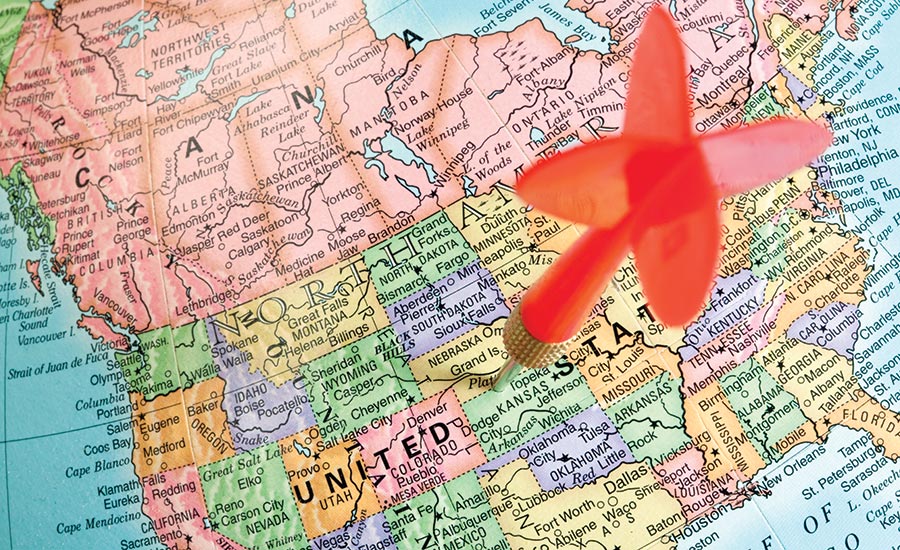Keys to Developing a Target Market

One of the issues I typically bring up when coaching building service contractors and other service providers, is what is their target market? That can mean different things to different contractors, but what I so often find is that they don’t have a target market. They clean and maintain just about any location that hires them. While this can work well, there are several reasons why having a target market can prove beneficial for both the contractor as well as the client.
For instance, the target or niche market of one very successful cleaning contractor in Northern California is healthcare. They clean all types of medical facilities including doctor and dentist offices, walk-in medical clinics, and recently expanded, cleaning veterinary hospitals.
A little background tells us why his target market is healthcare. For years, the owner worked as a housekeeper for a large hospital in California. He was taught how to tackle all the special cleaning needs of medical facilities, the cleaning-related regulations that needed to be adhered to in medical locations, and what administrators as well as doctors and nurses expected of him and the other housekeepers. So, cleaning healthcare locations, you could say, was a “natural” for him.
However, it also paid off for his medical and veterinary clients. He already knew what needed to be done and how to do it. The client did not need to teach him or his staff any of the procedures. Working as a hospital housekeeper paid off in many other ways as well. He learned cleaning procedures and processes his clients often were not aware of before. Methods that helped make his clients’ locations cleaner and healthier for both patients and staff.
When it comes to contractors working in the restoration and remediation (R&R) industry, having a target market can be a bit more complicated. For instance, an R&R contractor would likely not be in business very long if they just serviced healthcare facilities that have experienced a flood, fire, or some other form of disaster or destruction. They would need to be able to service different types of facilities used for different purposes. However, there still are ways to develop a target market that, just like our cleaning contractor discussed earlier, can benefit both R&R professionals as well as their clients. Among them are the following:
Logistics
This is a crucial concern in major metropolitan areas. While R&R contractors want to service as large a geographic area as possible, and certainly do not want to turn away business, they also must consider issues such as where do most of their current workers live; can they find qualified, entry-level workers to service more distant locations; the amount of travel time involved along with traffic conditions to service a remote area. These must all be considered because most R&R services are emergencies. The client needs help now. Further, keep in mind that stretching yourself too thin by servicing far away locations can negatively impact quality control, which can affect a company’s reputation. This makes having a wide enough, but specific enough service area one of the critical components for R&R professionals when putting together a target market.

Need
Target markets are also formed based on geographic needs. As this is being written, another hurricane is expected to hit South Florida and possibly Puerto Rico. R&R contractors are needed in these areas, however other areas of the country rarely have such destructive weather conditions. One way to determine if your service is needed is to do some research into the number of natural disasters in an area going back several years. This can help you decide if this area can be included as a target market. Another way, and one which may be unexpected, is to see how many R&R contractors are now located in an area being considered as a target market. If there are few contractors in that area, don’t necessarily interpret that to mean there are few competitors. More likely, it means there is just not enough business in that area to warrant many R&R companies.
Types of Clients
While all kinds of facilities may need the help and expertise of R&R professionals that does not necessarily mean these contractors should service a wide variety of facilities. Addressing the destruction caused by a fire or flood in a residence, for instance, can be very different from similar damage in a commercial, industrial, or retail setting. Determining the types of facilities your company wants to service is another step in creating a target market.
Current Clients
Very often, target markets evolve. For instance, some cleaning contractors find that most of their clients are in the same industry, located in the same areas, or similar types of facilities. R&R professionals should look at the kinds of facilities and situations they are most often called on going back a few years. Don’t be surprised if your target market has already been established, based on past clients and experiences.
Specialization
Virtually all types of R&R work today involve specialization and with it, special permits, regulations, licensing, and certifications. Further, some locations today want R&R professionals to have a construction permit in place per job. Having a specialty helps narrow down the number of regulations, certifications, paperwork, and licensing requirements. This can also play a key role in developing a target market. Plus, it can help narrow down the number and types of tools and equipment that must be purchased for R&R work.
Profits
In most all service-related fields, there are certain types of services that are more profitable than others. This is certainly true in R&R. Some types of restoration and remediation work do not pay as well as other types. Sometimes, this is determined by insurance companies or it can be influenced by the amounts that must be paid to workers. Whatever the reason, if the profit margin is too small, write this off as a target market. And remember, not only is it a good idea to specialize, but it is also a good idea to specialize in those services that are the most lucrative.
Anticipate Change
Target markets are not set in stone. Geographic areas, demographics, and specialties are dynamic and always changing. You are always changing. A current service area, for instance, or a specialty, may no longer interest you or be as necessary in the future as it is today.
Further, R&R professionals should consider other target markets that require year-round services. For instance, such services as addressing moisture control issues in a facility, indoor air quality, even disinfection services, can evolve into an entirely new target market.
The bottom-line, both literally and figuratively, is to anticipate change. Don’t get “stuck” in one niche market or another. Always keep your eyes open to what is happening in your community. Be willing to switch targets, recognizing that targets can change.
Looking for a reprint of this article?
From high-res PDFs to custom plaques, order your copy today!







